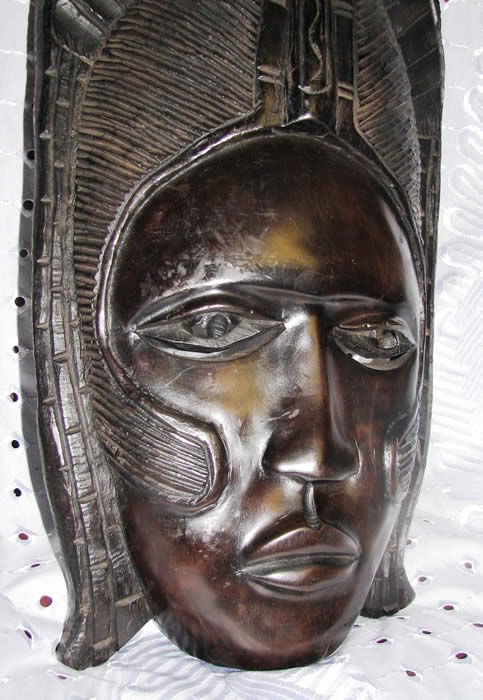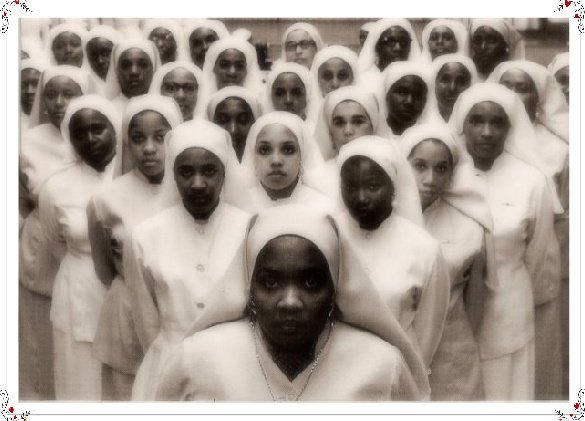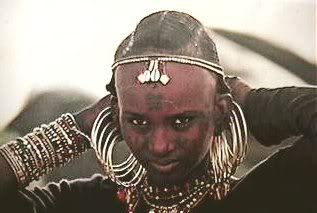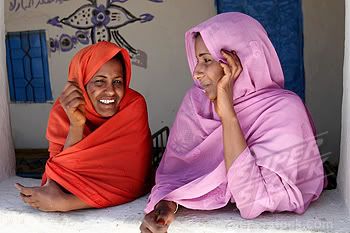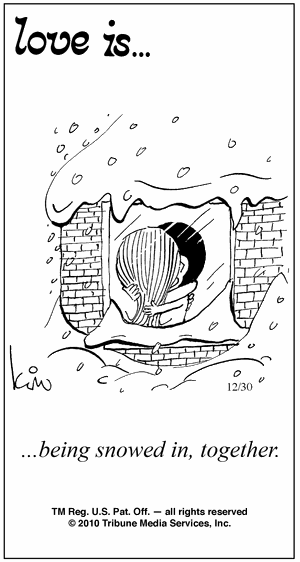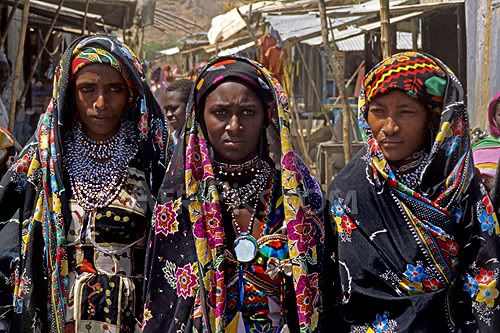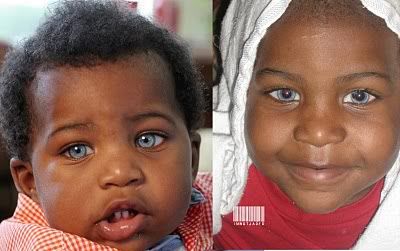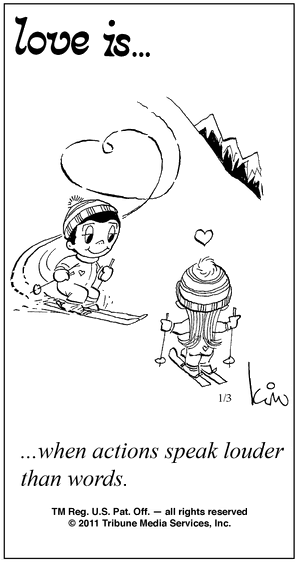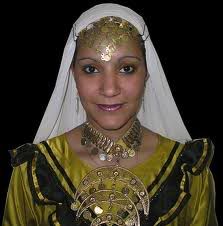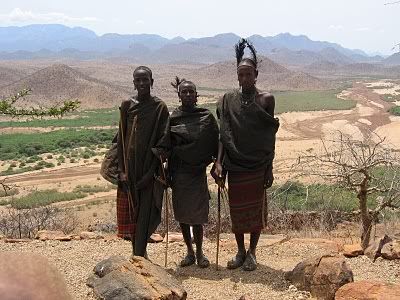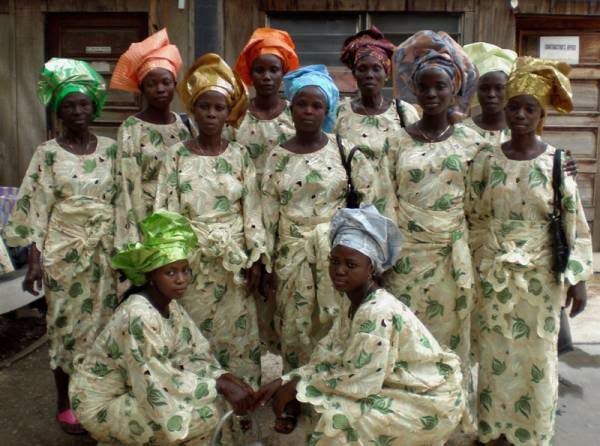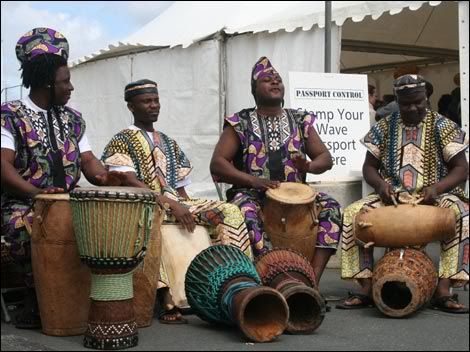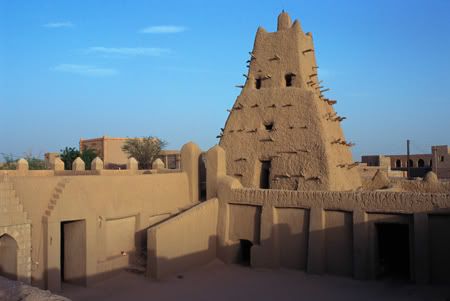
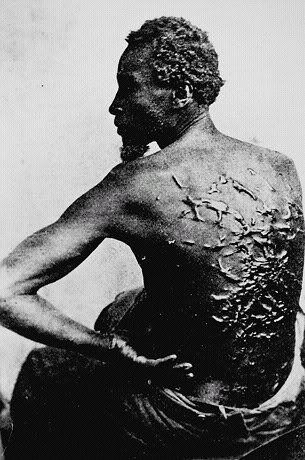

Shem Hotep ("I go in peace").
BLACK WAR THE DESTRUCTION OF THE TASMANIAN ABORIGINES
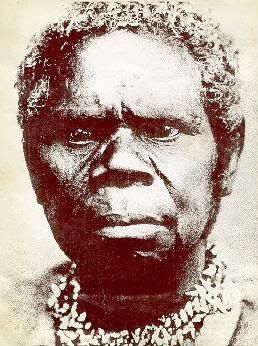
To many, the mention of Tasmania evokes humorous recollections of the Tasmanian devil--the voracious marsupial popularized in American cartoons. Tasmania is an island slightly larger in size than West Virginia, and is located two-hundred miles off Australia's southeast coast. The aboriginal inhabitants of the island were Black people who probably went there by crossing an ancient land bridge that connected Tasmania to the continent of Australia.
The Black aborigines of Tasmania were marked by tightly curled hair with skin complexions ranging from black to reddish-brown. They were relatively short in stature with little body fat. They were the indigenous people of Tasmania and their arrival there began at least 35,000 years ago. With the passage of time, the gradual rising of the sea level submerged the Australian-Tasmanian land bridge and the Black aborigines of Tasmania experienced more than 10,000 years of solitude and physical isolation from the rest of the world--the longest period of isolation in human history.
It is our great misfortune that the Black people of Tasmania bequeathed no written histories. We do not know that they called themselves or what they named their land. All we really have are minute fragments, bits of evidence, and the records and documents of Europeans who began coming to the island in 1642.
THE BLACK FAMILY IN TASMANIA
The Tasmanian aborigines were hunter-gatherers with an exceptionally basic technology. The Tasmanians made only a few types of simple stone and wooden tools. They lacked agriculture, livestock, pottery, and bows and arrows.
The Black family in Tasmania was a highly organized one--its form and substance directed by custom. A man joined with a woman in marriage and formed a social partnership with her. It would appear that such marriages were usually designed by the parents--but this is something about which very little is actually known. The married couple seems to have remained together throughout the course of their lives, and only in rare cases did a man have more than one wife at the same time. Their children were not only well cared for, but were treated with great affection. Elders were cared for by the the family, and children were kept at the breast for longer than is usual in child care among Europeans.
THE BEGINNING OF THE END OF THE BLACKS
The isolation of Tasmania's Black aborigines ended in 1642 with the arrival and intrusion of the first Europeans. Abel Jansen Tasman, the Dutch navigator after whom the island is named, anchored off the Tasmanian coast in early December, 1642. Tasman named the island Van Diemen's land, after Anthony Van Diemen--the governor-general of the Dutch East India Company. The island continued to be called Van Diemen's Land until 1855.
On March 5, 1772, a French expedition led by Nicholas Marion du Fresne landed on the island. Within a few hours his sailors had shot several Aborigines. On January 28, 1777, the British landed on the island. Following coastal New South Wales in Australia, Tasmania was established as a British convict settlement in 1803. These convicts had been harshly traumatized and were exceptionally brutal. In addition to soldiers, administrators, and missionaries, eventually more than 65,000 men and women convicts were settled in Tasmania. A glaringly inefficient penal system allowed such convicts to escape into the Tasmanian hinterland where they exercised the full measure of their blood-lust and brutality upon the island's Black occupants. According to social historian Clive Turnbull, the activities of these criminals would soon include the "shooting, bashing out brains, burning alive, and slaughter of Aborigines for dogs' meat."
TASMANIAN DEVILS IN HUMAN FORM
As early as 1804 the British began to slaughter, kidnap and enslave the Black people of Tasmania. The colonial government itself was not even inclined to consider the aboriginal Tasmanians as full human beings, and scholars began to discuss civilization as a unilinear process with White people at the top and Black people at the bottom. To the Europeans of Tasmania the Blacks were an entity fit only to be exploited in the most sadistic of manners--a sadism that staggers the imagination and violates all human morality. As UCLA professor, Jared Diamond, recorded:
"Tactics for hunting down Tasmanians included riding out on horseback to shoot them, setting out steel traps to catch them, and putting out poison flour where they might find and eat it. Sheperds cut off the penis and testicles of aboriginal men, to watch the men run a few yards before dying. At a hill christened Mount Victory, settlers slaughtered 30 Tasmanians and threw their bodies over a cliff. One party of police killed 70 Tasmanians and dashed out the children's brains."
Such vile and animalistic behavior on the part of the White settlers of Tasmania was the rule rather than the exception. In spite of their wanton cruelty, however, punishment in Tasmania was exceedingly rare for the Whites, although occasionally Whites were sentenced for crimes against Blacks. For example, there is an account of a man who was flogged for exhibiting the ears and other body parts of a Black boy that he had mutilated alive. We hear of another European punished for cutting off the little finger of an Aborigine and using it as a tobacco stopper. Twenty-five lashes were stipulated for Europeans convicted of tying aboriginal "Tasmanian women to logs and burning them with firebrands, or forcing a woman to wear the head of her freshly murdered husband on a string around her neck."
Not a single European, however, was ever punished for the murder of Tasmanian Aborigines. Europeans thought nothing of tying Black men to trees and using them for target practice. Black women were kidnapped, chained and exploited as sexual slaves. White convicts regularly hunted Black people for sport, casually shooting, spearing or clubbing the men to death, torturing and raping the women, and roasting Black infants alive. As historian, James Morris, graphically noted:
"We hear of children kidnapped as pets or servants, of a woman chained up like an animal in a sheperd's hut, of men castrated to keep them off their own women. In one foray seventy aborigines were killed, the men shot, the women and children dragged from crevices in the rocks to have their brains dashed out. A man called Carrotts, desiring a native woman, decapitated her husband, hung his head around her neck and drove her home to his shack."
THE BLACK WAR
"The Black War of Van Diemen's Land" was the name of the official campaign of terror directed against the Black people of Tasmania. Between 1803 and 1830 the Black aborigines of Tasmania were reduced from an estimated five-thousand people to less than seventy-five. An article published December 1, 1826 in the Tasmanian Colonial Times declared that:
"We make no pompous display of Philanthropy. The Government must remove the natives--if not, they will be hunted down like wild beasts and destroyed!"
With the declaration of martial law in November 1828, Whites were authorized to kill Blacks on sight. Although the Blacks offered a heroic resistance, the wooden clubs and sharpened sticks of the Aborigines were no match against the firepower, ruthlessness, and savagery exercised by the Europeans against them. In time, a bounty was declared on Blacks, and "Black catching," as it was called, soon became a big business; five pounds for each adult Aborigine, two pounds for each child. After considering proposals to capture them for sale as slaves, poison or trap them, or hunt them with dogs, the government settled on continued bounties and the use of mounted police.
After the Black War, for political expediency, the status of the Blacks, who were no longer regarded as a physical threat, was reduced to that of a nuisance and a bother, and with loud and pious exclamations that it was for the benefit of the Blacks themselves, the remainder of the Aborigines were rounded up and placed in concentration camps.
In 1830 George Augustus Robinson, a Christian missionary, was hired to round up the remaining Tasmanian Blacks and take them to Flinders Island, thirty miles away. Many of Robinson's captives died along the way. By 1843 only fifty survived. Jared Diamond recorded that:
"On Flinders Island Robinson was determined to civilize and Christianize the survivors. His settlement--at a windy site with little fresh water--was run like a jail. Children were separated from parents to facilitate the work of civilizing them. The regimental daily schedule included Bible reading, hymn singing, and inspection of beds and dishes for cleanness and neatness. However, the jail diet caused malnutrition, which combined with illness to make the natives die. Few infants survived more than a few weeks. The government reduced expenditures in the hope that the native would die out. By 1869 only Truganini, one other woman, and one man remained alive."
THE LAST TASMANIANS
With the steady decrease in the number of Aborigines, White people began to take a bizarre interest in the Blacks, whom Whites believed "to be a missing link between humans and apes." In 1859 Charles Darwin's book, On the Origin of Species, popularized the fantasy of biological (and therefore social) evolution, with Whites at the top of the evolutionary scale and Blacks at the bottom. The Aborigines were portrayed as a group of people "doomed to die out according to a natural law, like the dodo, and the dinosaur." This is during the same period in the United States that it was legally advocated that a Black man had no rights that a White man was bound to respect.
William Lanney, facetiously known as King Billy, was the last full-blood male Tasmanian. He was born in 1835 and grew up on Flinders Island. At the age of thirteen Lanney was removed with the remnant of his people to a concentration camp called Oyster Cove. Ultimately he became a sailor and some years he went whaling. As the last male Tasmanian, Lanney was regarded as a human relic. In January 1860 he was introduced to Prince Albert. He returned ill from a whaling voyage in February 1868, and on March 2, 1868 he died in his room at the Dog and Partridge public-house in Hobart, Tasmania.
Lanney, the subject of ridicule in life, became, in death, a desirable object. Even while he lay in the Colonial Hospital at least two persons determined to have his bones. They claimed to act in the interest of the Royal Society of Tasmania. On March 6, 1868, the day of the funeral, fifty or sixty residents interested in Lanney gathered at the hospital. Rumors were circulating that the body had been mutilated and, to satisfy the mourners, the coffin was opened. When those who wished to do so had seen the body, the coffin was closed and sealed. Meanwhile it was reported that, on the preceding night, a surgeon had entered the dead-house where Lanney lay, skinned the head, and removed the skull. Reportedly, the head of a patient who had died in the hospital on the same day was similarly skinned, and the skull was placed inside Lanney's scalp and the skin drawn over it. Members of the Royal Society were "greatly annoyed" at being thus forestalled and, as body-snatching was expected, it was decided that nothing should be left worth taking and Lanney's hands and feet were cut off. In keeping with the tradition no one was punished. William Lanney, the last Black man in Tasmania, was gone.
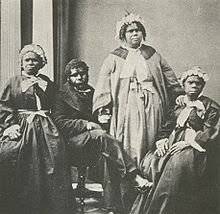 QUEEN TRUGANINI: THE LAST TASMANIAN
QUEEN TRUGANINI: THE LAST TASMANIAN
"Not, perhaps, before, has a race of men been utterly destroyed within seventy-five years. This is the story of a race which was so destroyed, that of the aborigines of Tasmania--destroyed not only by a different manner of life but by the ill-will of the usurpers of the race's land.... With no defences but cunning and the most primitive weapons, the natives were no match for the sophisticated individualists of knife and gun. By 1876 the last of them was dead. So perished a whole people." --Clive Turnbull
On May 7, 1876, Truganini, the last full-blood Black person in Tasmania, died at seventy-three years of age. Her mother had been stabbed to death by a European. Her sister was kidnapped by Europeans. Her intended husband was drowned by two Europeans in her presence, while his murderers raped her.
It might be accurately said that Truganini's numerous personal sufferings typify the tragedy of the Black people of Tasmania as a whole. She was the very last. "Don't let them cut me up," she begged the doctor as she lay dying. After her burial, Truganini's body was exhumed, and her skeleton, strung upon wires and placed upright in a box, became for many years the most popular exhibit in the Tasmanian Museum and remained on display until 1947. Finally, in 1976--the centenary years of Truganini's death--despite the museum's objections, her skeleton was cremated and her ashes scattered at sea.
CONCLUSION
The tragedy of the Black aborigines of Tasmania, however painful its recounting may be, is a story that must be told. What lessons do we learn from the destruction of the Tasmanians? Truganini's life and death, although extreme, effectively chronicle the association not only between White people and Black people in Tasmania, but, to a significant degree, around the world. Between 1803 and 1876 the Black aborigines of Tasmania were completely destroyed. During this period the Black people of Tasmania were debased, degraded and eventually exterminated. Indeed, given the long and well-documented history of carnage, cruelty, savagery, and the monstrous pain, suffering, and inhumanity Europeans have inflicted upon Black people in general, and the Black people of Tasmania in particular, one could argue that they themselves, the White settlers of Tasmania, far more than the ravenous beast portrayed in American cartoons, have been the real Tasmanian devil.
INDIGENOUS TASMANIANS TODAY: SURVIVORS OF THE HOLOCAUST
The above article was written around 1997 and was a part of an ongoing series of articles designed to draw attention to the past and present, the history and the current status, of Black people around the world. In that sense I believe that it is basically a very good article. It should be pointed out though that it was written before my first trip to Australia. More and more, over the the course of time, I have come to find that travel is a wonderful educational experience indeed, and that during the process you often come across information not commonly found in books.
In November 1998 I was invited to speak at the World's Indigenous Peoples Conference in Toowomba, Queensland, Australia. During my Australian sojourn, in addition to the Conference, I was able to travel to several regions and three states. For the first time I interacted with large numbers of Indigenous Australians. The Conference itself was magnificent; a real triumph and one of the great experiences of my life. Even before the Conference convened, however, I was shocked to meet for the initial time a Black man from Tasmania! He was professor Errol West of the University of Southern Queensland. Prof. West (a noted scholar and an excellent poet) and I quckly developed a close bond and soon became good friends. We talked and socialized together a great deal and it became readily apparent that only the full-blood Blacks had perished in the holocaust, and that there were Black people living in Tasmania today. Obviously, this was in stark contrast to all of the major writings on the subject. Prof. West also gave me a very different and contrasting view of Truganini.
My trip to Australia gave me a great deal to think about and a lot to reassess. Eighteen months later I returned to Australia and saw even more of this fascinating country, and I have since learned a great deal more about the history and current conditions of the original people. And the education hasn't stopped. Several months ago I received a series of emails from a Tasmanian sister who expressed tremendous gratitude for the article and encouraged and assured me that the Blacks of Tasmania "are alive and still fighting for our rights and the recognition that we deserve as Indigenous peoples." In 2002 I plan to travel to Tasmania itself. And the education continues.
